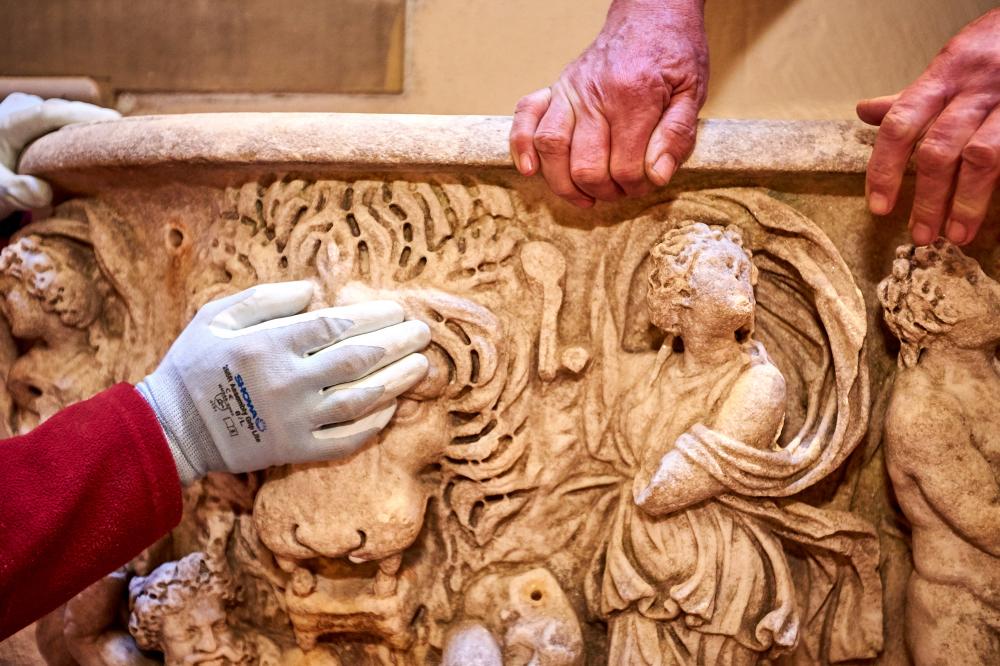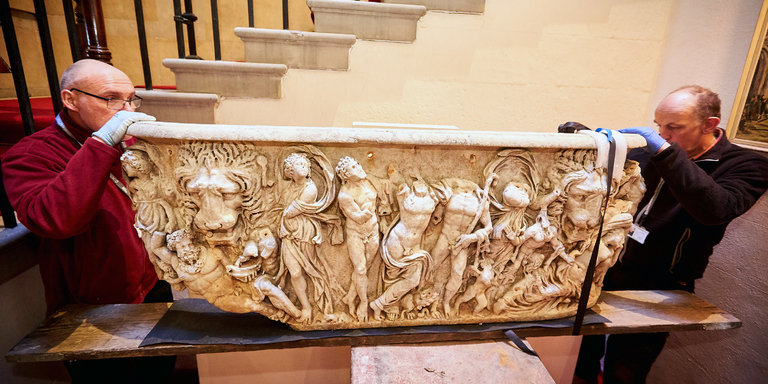OXFORDSHIRE, ENGLAND – In a twist of events, an antiques expert visiting Blenheim Palace realized that one of the building’s flower pots was actually an ornately carved ancient Roman coffin.
It was just a routine visit, official business, according to the palace manager. The flower pot itself had long been a feature on the estate. It’d arrived at Blenheim Palace in the 19th century, and was originally used to collect water from a natural spring. In the 20th century, the piece was later incorporated into the estate’s rock garden. When the antiques expert found the coffin, it was filled with potting soil, and tulips were sprouting up from it.
“[The expert] happened to see it,” palace spokesman Jonathan Prince told the New York Times. He also said that the piece was not for sale, and would remain at Blenheim palace.
The palace manager called in Nicholas Barnfield, an architectural stone and sculpture expert working with Cliveden Conservation. He and his team carefully removed the coffin from its place in the rock garden and transported it to their workshop, where they carefully cleaned and restored it.

PHOTO: blenheimpalace.com
The sarcophagus is made from marble, and features Dionysus, the Roman god of wine and parties, leaning on a satyr. Hercules and Ariadne are also depicted on the piece, as well as some lion heads. Nicholas Barnfield explained that these depictions were meant to “[usher] you into the afterlife in a nice drunken happy state, a merry state.”
The coffin isn’t merely a pretty piece of marble, though. It also has immense historical value. Due to the time at which it was carved, it represents a change in ancient Roman culture.
“It is indicative of when the Romans shifted from burning their dead to interring them,” Nicholas Barnfield explained. “So it is a coffin.”
The marble coffin is over seventeen centuries old, and though some damage does remain from its years of use as a fountain and flowerpot, respectively, it’s still in amazingly beautiful condition.
“There are two or three gardens around Britain that have quite significant artifacts in their gardens. But not of this quality. Some of them can be quite plain. This one is exquisite. It is jewel-like in its carving.” – Nicholas Barnfield.
The piece has no inscriptions on it to tell us who it was made for. The archaeologists working on it aren’t even sure if someone was ever buried inside of it. All we know that is that it must have been made for someone with quite a lot of money, since it’s so beautifully made.
For now, the coffin remains safe at Blenheim Palace. It has been fully restored by Barnfield and his team, and is now on display inside the building.


